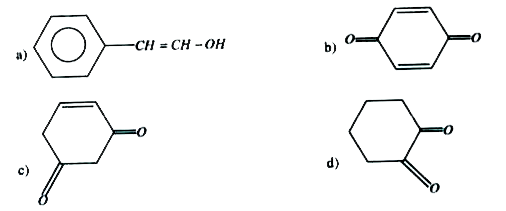The formation of the oxide ion O2−(g) from oxygen atom requires first an exothermic and then an endothermic step as shown below :
O(g)+e−→O−(g),ΔfH0=−141kJmol−1
O−(g)+e−→O−2(g),ΔfH0=+780kJmol−1
Thus, process of formation of O2− in gas phase is unfavourable even thrugh O2− is isoelectronic with neon. It is due to the fact that (2015) Solution in Telugu
Oxygen is more electronegative
Addition of electron in oxygen results in larger size of the atom
Electron repulsion outweighs the stability gained by achieving noble gas configuration
O−ion has comparatively smaller size than oxygen atom
The correct Answer is:C
Step by step video, text & image solution for The formation of the oxide ion O _((g)) ^(2-) from oxygen atom requires first an exothermic and then an endothermic step as shown below : O _((g)) + e ^(-) to O _((g )) ^(-) ,Delta _(f) H^(0) =-141 kJ mol ^(-1) O _((g)) ^(-) +e ^(-) to O _((g)) ^(-2) ,Delta _(f) H^(0) =+ 780 kJ mol ^(-1) Thus, process of formation of O^(2-) in gas phase is unfavourable even thrugh O ^(2-) is isoelectronic with neon. It is due to the fact that (2015) by Chemistry experts to help you in doubts & scoring excellent marks in Class 11 exams.
Updated on:21/07/2023Topper's Solved these Questions
- PERIODIC CLASSIFICATIONBook:AAKASH SERIESChapter:PERIODIC CLASSIFICATIONExercise:OBJECTIVE EXERCISE - 2 (DIAGONAL RELATIONSHIP)
Explore 9 Videos
- ISOMERISM Book:AAKASH SERIESChapter:ISOMERISM Exercise:ADDITIONAL PRACTICE EXERCISE ( PRACTICE SHEET (ADVANCED) INTEGER TYPE QUESTIONS)
Explore 10 Videos
- PERIODIC PROPERTIESBook:AAKASH SERIESChapter:PERIODIC PROPERTIESExercise:LEVEL-II (TYPE -II) (PRACTICE SHEET -3 (SUBJECTIVE/ ANALYTICAL TYPE QUESTIONS ))
Explore 8 Videos
Similar Questions
Diagonal relationship is present between the lighter elements of periods
View SolutionTautomerism is exhibited by X number of compounds among the following. What is X.

View SolutionWhat is the valency possible to Arsenic with respect to oxygen and hydrogen?
View SolutionThe formation of the oixde ion, O^(2+)(g) from oxygen atom requires first an exothermic and then an endothermic step as shown below: O(g)+e^(-) rarr O^(-)(g), Delta H^(O)=-141kJ mol^(-) O(g)+e^(-) rarr O^(-)(g), H^(O)=-kJ mol^(-) Thus the process of formation of O^(2-) in gas phase is neon. It is due to the fact that
View SolutionThe formation of oxide ion O2−(g) from oxygen atom requires first an exothermic and then an endothermic step as shown below
O(g)+e−→O−(g),ΔH−=−141kjmol−1
O−(g)+e−→O2−(g),ΔH−=+780kjmol−1
Thus, process of formation of O2− in gas phase is unfavourable even through O2− is isoelectronic with neon. It is due to the fact that
View SolutionThe formation of the oxide ion O2−(g), from oxygen atom requires first an exothermic and then an endothermic step as shown below :
O(g)+e^(-) to O(g): Delta_(f)H^(Ѳ)= - 141 "kJ mol"^(-1)
O−(g)+e−→O2−(g),ΔfHѲ=+780kJ mol−1
Thus process of formation of O2− in gas phase in unfavourable even though O2− is isoelectronic with neon. It is due to the fact that
View SolutionThe formation of the oxide ion O^(2-) (g) requires first an exothermic and then an endothermic step as shown below : O (g) + e^(-) to O^(-) ( g) : Delta H^(@) =- 142 k J mol^(-1) O^(-) (g) + e^(-) to O^(2-) (g) , DeltaH^(@) = + 844 kJ mol^(-1) This is because
View SolutionThe formation of oxide ion O2−(g) from oxygen atom requires first an exothermic and then an endothermic step as shown below
O(g)+e−→O−(g),ΔH−=−141kjmol−1
O−(g)+e−→O2−(g),ΔH−=+780kjmol−1
Thus, process of formation of O2− in gas phase is unfavourable even through O2− is isoelectronic with neon. It is due to the fact that A) oxygen is more electronegative B) addition of electron in oxygen results in larget size of the ion C) electron repulsion outweights the stability gained by achieving noble gas configuration D) O− ion has comparatively smaller size than oxygen atom
View SolutionThe formation of the oxide ion O2−(g), form oxygen atom requires first an exothermic and then an endothermic step as shown below,
O(g)+e−→O−(g),ΔH0f=−141kJ⋅mol−1
O−(g)+e−→O2−(g),ΔH0f=+780kJ⋅mol−1 ltbr> Thus, process of formations of O2− in gas phase is unfavourable even through O2− is isoelectronic with neon. it is due to the fact that-
View SolutionThe formation of O2−(g) startng from O(g) is endothermic by 603kJmol−1. If electron gain enthalpy of O(g) is −141kJmol−1, the second electron gain enthalpy of oxygen would be :
View SolutionThe formation of the oxide ion O2−(g) from oxygen atom requires first an exothermic and then an endothermic step as shown below :
O(g)+e−→O−(g),ΔfH0=−141kJmol−1
O−(g)+e−→O−2(g),ΔfH0=+780kJmol−1
Thus, process of formation of O2− in gas phase is unfavourable even thrugh O2− is isoelectronic with neon. It is due to the fact that (2015)
View SolutionThe formation of oxide ion O2−(g) from oxygen atom requires first an exothermic and then an endothermic step as shown below
O(g)+e−→O−(g),ΔH−=−141kjmol−1
O−(g)+e−→O2−(g),ΔH−=+780kjmol−1
Thus, process of formation of O2− in gas phase is unfavourable even through O2− is isoelectronic with neon. It is due to the fact that m
View SolutionThe formation of the oxide ion (O2−(g)) require first an exothermic and then an endothermic step as shown below
O(g)+¯e→O−(g),ΔH0=−142 kJ mol−
O−(g)+¯e→O2−(g),ΔH0=844 kJ mol−
This is because
View Solutionऑक्साइडों के निर्माण में प्रथम क्रिया ऊष्माक्षेपी तथा दूसरी ऊष्माशोषी क्रिया होती है
O(g)+1e−→O−(g),ΔH=−141 किलोजूल मोल−1
O−(g)+1e−→O2−(g),ΔH=+780 किलोजूल मोल−1
अत: O2− निर्माण में आसानी नहीं होती है इसका कारण यह है, कि
View SolutionThe formation of the oxide ion O^(2-) (g) requires first an exothermic and then an endothermic step as shown below : O (g) + e^(-)= O^(-) (g), DeltaH^(@) = - 142 kJ moI^(-1) O(g)+e^(-)toO^(2-)(g),DeltaH^(@)=844kJmol^(-1) This is because
View SolutionThe formation of the oxide ion O2−(g) from oxygen atom requires first an exothermic and then an endothermic step as shown below: O(g)+e→O−(g),δtH=−1.41kJmol−1,O−(g)+e−→O2−(g),δtH=+1780kjmol−1 thus process of formation of O2− in gas phase is unfavourable even though O2− is isoelectronic with neon it is due to the fact that
View Solution
